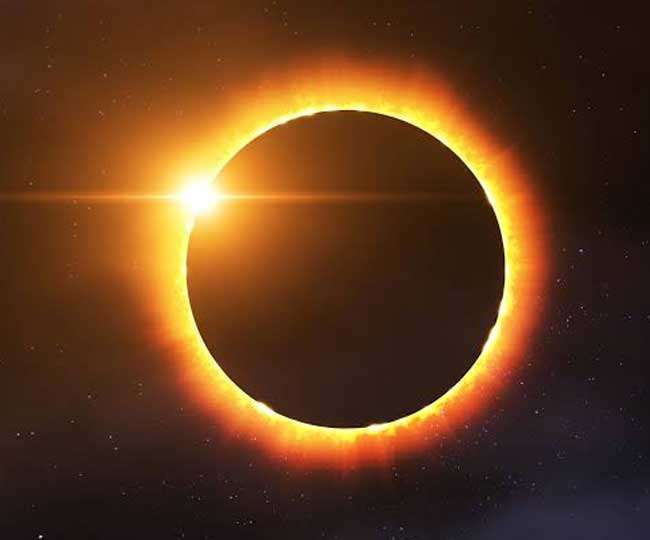New Delhi (NVI): India will be witnessing the first solar eclipse of the year 2020 on June 21, which will be annular (ring-shaped) in some parts of the country while for most parts of the country, the eclipse will be partial.
It will be annular in the places where the moon will cover the Sun from the centre leaving the outer rim visible, thus creating a “ring of fire” in the sky.
The path of the annular solar eclipse will start near Gharsana in Rajasthan around 10.12 am and the phase of annularity will begin around 11.49 am and end at 11:50 am, according to the Ministry of Earth Sciences.
This event will be visible for around a minute from places such as Suratgarh and Anupgarh in Rajasthan, Sirsa, Ratia and Kurukshetra in Haryana, and Dehradun, Chamba, Chamoli and Joshimath in Uttarakhand, it added.
This year has witnessed lunar eclipses already and now the first solar eclipse will happen on June 21.
The annular path will pass through Congo, Sudan, Ethiopia, Yemen, Saudi Arabia, Oman, Pakistan, northern parts of India and China. The Moon’s penumbral shadow produces a partial eclipse, which will be visible in the region covering Africa, South East Europe, Asia, except North and East Russia, and northern parts of Australia.
A solar eclipse occurs when the Moon comes between the Sun and Earth, blocking the rays of Sun from directly reaching the planet. An annular solar eclipse will occur when the angular diameter of the Moon falls short of that of the Sun so that it cannot cover up the latter completely. As a result, a ring of the Sun’s disk remains visible around the Moon.
The Ministry of Earth Science has advised that the eclipsed Sun should not be viewed with the naked eye, even for a very short time. “It will cause permanent damage of the eyes leading to blindness even when the moon covers most portion of the Sun,” it said.
Safe technique to observe the solar eclipse is either by using proper filter like aluminized Mylar, black polymer, welding glass of shade number 14 or by making projection of Sun’s image on a white board by telescope, the ministry recommended.








